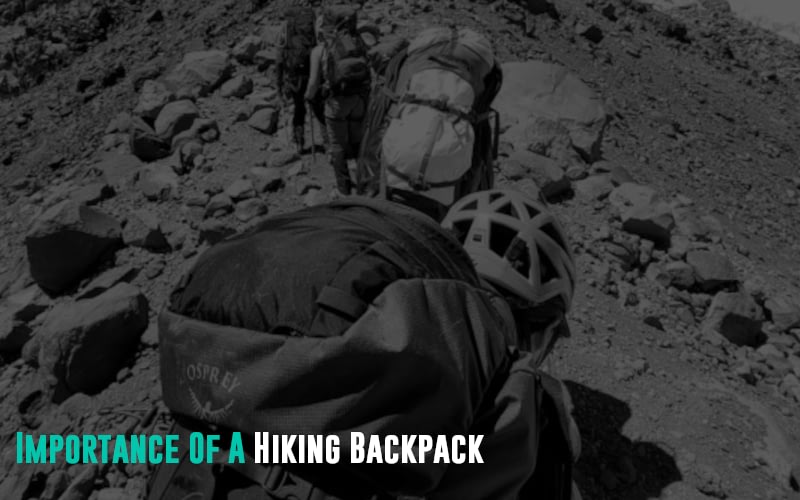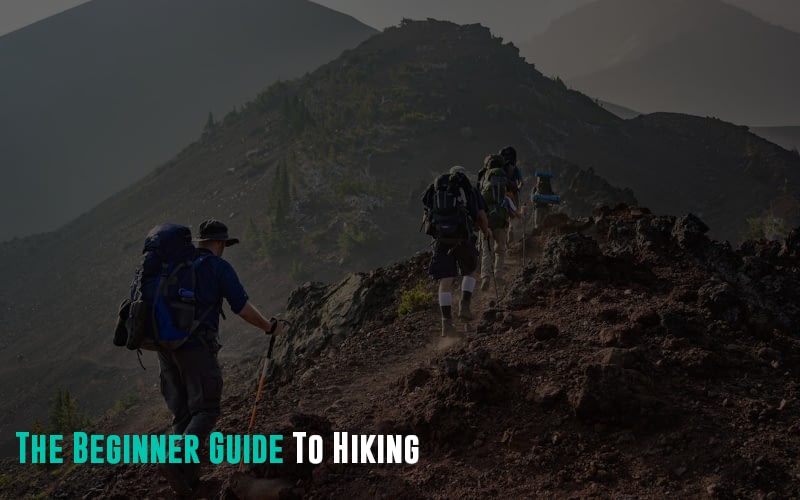Hiking is your first step to seeing how amazing this world truly is. You will never experience the world the same way with virtual reality, video games, or movies as you can with your own two eyes. I’ve taken photos of breathtaking moments and never felt or experienced the exact impact of those moments from the video or photo recordings. Things are just not the same. Hiking opens doors to you that you never would imagine being open. So, let’s dive into this beginner guide to hiking!
First, what is hiking? I will use it as a mega category of walking out in nature. Traditionally, most will think of hiking as also meaning there is a trail to follow. I will consider backpacking, scrambling, climbing, mountaineering, and all ultra variants on a more advanced form of hiking that is not beginner-friendly. So before we dive into those subcategories, we must crawl before we can walk.
Featured Image Credit
Start With Easy Hikes As A Beginner

Hiking will involve finding trails in nature and exploring those trails to the end and back. Animals naturally make trails, and most of the ones you follow are human-made. At its’ most basic principles, around 20 or so steps along one route will start to kill vegetation and make a visible path on the ground. The more usage a path gets, the broader and easier it is to follow. Well-trafficked paths become something like highways in nature! Thus, let’s rule out trails with fading paths or even a path that are not beginner-friendly.
Many national parks, forests, and cities worldwide will often advertise a lot of their beginner hikes freely. Therefore, some quick internet searches or travel research can often be fruitful. Since well-trafficked paths are beginner-friendly, you want to go and explore some of those to start. It gives you a great way to test your gear, build your endurance, and test your physical comforts before diving into more profound things. Going through the beginner’s steps is vital to learning hiking quickly, as I explain more deeply in a general manner in this article.
It is worth noting that hiking can generally be split into difficulty two categories. Strenousness and technical. Strenousness indicates how physically demanding the trail might be. Technical indicates how technical it might be from features, comfort, exposure, etc. Technical hikes need tools and skills to mitigate risk and thus are not beginner-friendly. Focus on pushing to more challenging, strenuous hikes and improve your speed on those trails. The faster you can move, the more options you’ll eventually be able to explore with the harder stuff.
Hiking is truly a marvel. I have gone to so many places and continue to explore so few places anyone will ever go because I also started as a beginner hiker. I fell in love with those possibilities of where I could eventually see and go, and I never stopped dreaming. Go at your own pace, as the journey matters and not the end.
Equip Yourself With The Ten Essentials

A handy catchphrase has been created and spread well to be common hiker knowledge to help everyone understand what they should always bring backpacking. These are the ten essentials. When you start backpacking, these should be first on your list to acquire, and always be ready before setting out on your next adventure. Realistically, they may not all be needed on very well-trafficked hiking trails and for beginners, but you should acquire these before you start feeling ready to make harder trails (even more strenuous trails). Start collecting them now! Good hiking gear will be compact and lightweight, but starting with non-hiking optimal gear is acceptable.
The National Park Service has a good breakdown of the essentials here. The most important to emphasize is water. You must have sufficient water for the heat and strain of the hike. Better to take more than you need than not enough. Once you become more experienced and better gauge how much water you need, you can optimize here.
Sun protection is another big one. Whether it is sunny and especially if there is going to be snow, you must protect your eyes. Snow reflects light like a mirror, and you won’t be able to look up or down. As a result, your eyes could receive permanent damage.
Insulation is an essential consideration, as even though you get very hot while moving, all the sweat on your body will cool you very fast once you stop. Therefore, if you want to stop for a moment, wait for others, and enjoy the view, you must keep warm. Worst, the insulation could be life-saving if you injure yourself and become immobile.
Lastly, bring a hard-shell jacket. They are lightweight and highly packable. It will protect you from heavy wind and rain. I almost take more hard shells everywhere due to their high utility and portability.
Have A Good Pair Of Boots To Start As A Beginner
Many advice these days seems to indicate not to go with hiking shoes, but I believe this is not good advice for beginners. Hiking boots protect your feet with solid soles, stiffer toe protection, water resistance, and thick ankle support. This makes them heavier and super breathable. However, they do what they do well: protect your feet. Starting hiking with lots of exploration and getting the feel of it, it can be easy to suddenly trip over a root or a rock and break those ankles. A hiking boot will help immensely. Once you start, you can feel free to graduate to trail runners. I typically wear hiking boots to the most rugged or unknown trails. I will use trail runners on prevalent and well-paved hiking trails.
Importance Of A Hiking Backpack

To start, I won’t say you need to go out and buy yourself a hiking backpack. These can be expensive for some, and if you find hiking isn’t for you, it can be wasteful. So grab a bag that can hold your essentials and enjoy. I want you to know what a hiking bag will bring you and why you should get one if you want to enjoy hiking long-term.
A hiking backpack has several features a regular school or laptop backpack won’t bring. The most important of which is the sturdy hip belt. The hip belt is critical because it displaces your backpack’s weight onto your hips instead of your shoulders. Other features are compartments, hip belt pockets, compartments for water bottles or bags, loops, and equipment slings that will get you started on your hiking career. Also, many backpacks have a much more breathable mesh on your back, so it helps your back breathe more.
I hope you enjoyed this guide to hiking! Check out more of my articles on Travel, Engineering, and Adventure! Did you know Travel-Wise is a free trip-planning tool to help you make your next trip plans a breeze?

